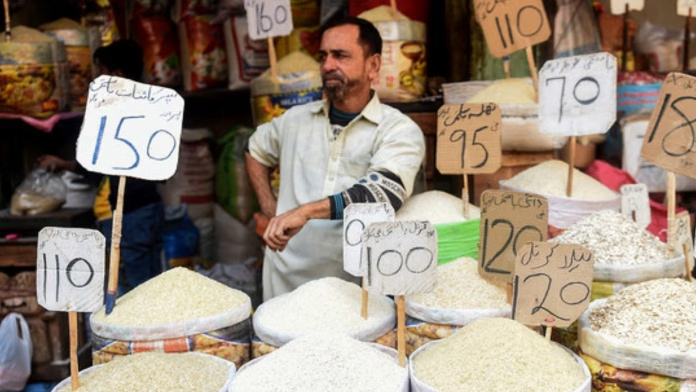Retail inflation, which is measured by the Consumer Price Index (CPI), stayed above the Reserve Bank of India’s (RBI) upper tolerance level of 6% for the second consecutive month in February 2023. This is mainly due to costlier cereals, milk, and spices, which have put pressure on the central bank to raise interest rates further. The Ministry of Statistics and Programme Implementation’s data for February showed that inflation based on the CPI fell marginally to 6.44% from 6.52% in January.
Inflation has been a persistent problem in India, with retail inflation remaining above the RBI’s upper tolerance level of 6% for most of the past year. Apart from November and December of 2022, retail inflation has remained above the upper tolerance level since January 2022. The RBI has projected that retail inflation will be 6.5% for FY23.
Rajani Sinha, Chief Economist at Care Edge, said, “High CPI inflation, above 6% for the second consecutive month, is concerning. CPI inflation for February was led by an uptick in food inflation and a strengthening of price pressures in non-food categories such as housing, household goods and services and health. But, worryingly, core inflation has remained elevated at 6.3%.”
India ratings said, “While vegetables continued to remain in the deflationary mode for four consecutive months, it is cereal inflation which is pushing retail inflation outside the comfort zone of RBI. Cereals and product inflation in February 2023 increased to 16.73%, the sixth consecutive month of double-digit inflation. Consumer food inflation declined 5 basis points in February 2023 from January 2023,”
Icra Chief Economist Aditi Nayar, said, “There is concern about milk inflation at 9.7%. The prices have been raised often this year – at least three times to adjust for higher fodder costs. These prices will never come down. Spices inflation has peaked at 20%, which though it has a small share in the basket, is significant in terms of reflecting demand-supply mismatches. Prepared meals/foods have witnessed inflation of 8% as costs have been passed on. Here, it should be remembered that prices are seldom reduced even when costs come down,” said Madan Sabnavis, chief economist at Bank of Baroda. “There was a relatively larger step-up in prices of some services in the post-pandemic period following the reopening of the economy. However, annual changes in the services segment are likely to be of a smaller quantum going ahead, which may lead to some tempering in the core inflation in FY24.”
Rural areas have seen higher inflation rates than urban areas, mainly because of the food basket’s greater weightage. In February, rural inflation stood at 6.72%, while urban inflation was 6.10%. Food prices contribute to around 40% of the CPI basket, and economists are concerned about the rising prices of cereals, milk, and spices that have driven up food inflation. Cereals inflation jumped 16.7% due to ongoing heat waves in some parts of the country, which has cast a shadow on the wheat crop’s prospects.
To control rising prices, the RBI has raised interest rates by 250 basis points since May 2021. In February 2023, the RBI raised the policy rate by 25 basis points to 6.50%. However, the rate hike is not expected to have a significant impact on inflation immediately, as it takes time for the effect of rate hikes to be felt in the economy.
Globally, inflation has been rising since the Ukraine war broke out in February 2022. According to the International Monetary Fund (IMF), global inflation is expected to rise from 4.7% in 2021 to 8.8% in 2022 before falling to 6.5% in 2023 and 4.1% by 2024. The IMF also predicts that global growth will slow from 6% in 2021 to 3.2% in 2022 and 2.7% in 2023, marking the weakest growth profile since 2001, except for the global financial crisis and the acute phase of the COVID-19 pandemic.
India’s persistent inflation problem has continued, with retail inflation remaining above the RBI’s upper tolerance level of 6% for most of the past year. Rural areas have seen higher inflation rates than urban areas, primarily due to the food basket’s greater weightage. The RBI has raised interest rates by 250 basis points since May 2021 to control rising prices, and global inflation is expected to rise further before falling in the coming years.





